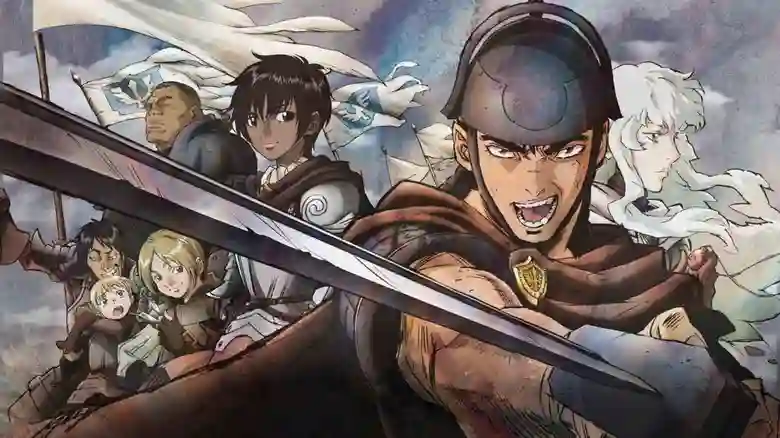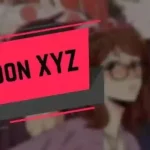Within the brutal and unforgiving world of Berserk, where survival often teeters on the edge of a sword, one artifact stands as a symbol of desperation and resilience—the Berserker Armor worn by the indomitable protagonist, Guts. In this article, we explore the significance of Guts’ Berserker Armor, dissecting its origins, functions, and the profound role it plays in the epic struggle against fate within the dark fantasy masterpiece.
The Genesis of Desperation:
The Berserker Armor makes its debut in the Conviction Arc of Berserk, a narrative phase marked by Guts’ relentless pursuit of revenge against the God Hand and Apostles. Crafted by the enigmatic blacksmith, Rickert, and infused with the spirit of a tormented elven warrior, the armor becomes a testament to the desperate measures Guts is willing to take in his quest for vengeance and survival.
As a narrative device, the Berserker Armor symbolizes the depths of Guts’ desperation and the toll his relentless struggle has taken on both body and mind. Its introduction marks a turning point in Guts’ journey—a shift from a lone swordsman facing insurmountable odds to a relentless force of nature consumed by the need for retribution.
Functionality and Sacrifice:
The Berserker Armor, beyond its formidable appearance, serves a dual function in the world of Berserk. On one hand, it enhances Guts’ physical capabilities to superhuman levels, providing him with the strength, speed, and resilience needed to face the demonic hordes that stand in his way. On the other hand, this enhancement comes at a severe cost—a toll on Guts’ sanity and physical well-being.
The functionality of the Berserker Armor is a double-edged sword, amplifying Guts’ strength while stripping away his inhibitions and humanity. As he dons the armor, Guts sacrifices a piece of himself, giving in to the primal instincts that lurk beneath the surface. The toll on his body becomes visible through the contorted and twisted appearance the armor imparts—a visual metaphor for the internal struggle between the human and the berserker within.
A Symphony of Struggle:
The Berserker Armor transforms Guts into a relentless force of destruction—a symphony of struggle against the monstrous forces that seek to consume him. The armor’s design, with its jagged edges and intimidating silhouette, becomes an extension of Guts’ internal turmoil. In moments of intense combat, the symphony reaches a crescendo as Guts succumbs to the berserker rage within, tearing through enemies with a feral and unbridled ferocity.
This symphony of struggle extends beyond mere physical combat; it becomes a metaphor for Guts’ internal battle against the traumas and horrors he has endured. The Berserker Armor, with its melding of the supernatural and the psychological, encapsulates the essence of Berserk—a narrative that transcends the boundaries of traditional fantasy by delving into the psychological depths of its characters.
The Descent into Madness:
As Guts succumbs to the influence of the Berserker Armor, the narrative takes a harrowing plunge into the abyss of madness. The visual representation of Guts within the armor, with his contorted and demonic appearance, reflects the toll on his psyche. The descent into madness becomes a poignant exploration of the sacrifices made in the pursuit of vengeance and the thin line between heroism and monstrosity.
Miura’s artistry shines through in these moments, capturing the grotesque beauty of Guts’ transformation. The Berserker Armor becomes a visual conduit for the psychological and emotional depths explored in Berserk, inviting readers to confront the consequences of Guts’ desperate gambit.
The Toll on Body and Soul:
While the Berserker Armor grants Guts the power to face overwhelming odds, it extracts a steep toll on both his body and soul. The physical toll is evident in the scars and wounds that mar Guts’ body after each berserker episode. The toll on his soul, however, is a more subtle and insidious narrative thread.
The Berserker Armor represents a Faustian bargain—a pact that grants power in exchange for the erosion of humanity. Guts’ internal struggle becomes a focal point, as he battles to retain his identity amid the cacophony of the berserker rage. The toll on his soul is a central theme, inviting readers to question the cost of vengeance and the blurred lines between hero and antihero in the unforgiving world of Berserk.
The Tragic Beauty of Desperation:
In the desperate gambit of wearing the Berserker Armor, Guts finds a tragic beauty—a paradoxical fusion of strength and vulnerability, ferocity and despair. The visual narrative woven into the Berserker Armor sequences becomes a mirror reflecting the human condition, exploring the lengths individuals are willing to go to in their struggle against seemingly insurmountable odds.
The Berserker Armor encapsulates the essence of Berserk—a narrative that transcends traditional fantasy by delving into the complexities of the human experience. It becomes a symbol of the tragic beauty inherent in the relentless pursuit of one’s goals, even in the face of overwhelming darkness.
Conclusion:
Guts’ Berserker Armor stands as a testament to the desperation that permeates the narrative of Berserk. It is a visual embodiment of the character’s unyielding will and the price he pays for challenging the cosmic forces that govern his world. In the symphony of struggle, the toll on body and soul, and the tragic beauty of desperation, the Berserker Armor becomes a narrative cornerstone—a symbol of Guts’ indomitable spirit and the relentless struggle against fate in the haunting world of Kentaro Miura’s magnum opus.








